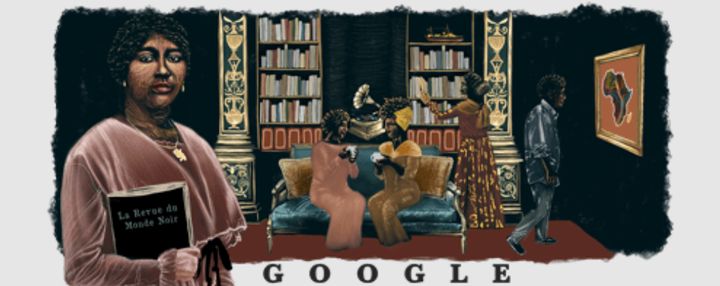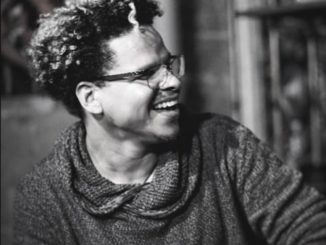
We often speak of Aimé Césaire, Léopold Sédar Senghor when it comes to talking about Negritude but history has deliberately or not forgotten the woman who played a central role in the creation of this literary movement in France. This is Paulette Nardal, a journalist and woman of letters.
Félix Jeanne Paule Nardal was born in the town of Le François in Martinique in 1896 in a bourgeois family. She was the eldest of seven daughters of Paul Nardal (a black engineer) and Louise Achille (a mixed-race teacher): Jeanne, Andrée, Alice, Lucy, Cécile and Émilie.
After being a schoolteacher, in 1920, the young Martinican woman, who was 24 years old, decided to continue her studies in literature. She went to the “Metropolitan France” and enrolled at the Sorbonne to learn English. This was a revolution, as she and her sister Jeanne were the first black students from Martinique to enter this Parisian university. The thesis of the woman who was to become Paulette Nardal was about the American writer and abolitionist Harriet Beecher Stowe, who published the famous novel Uncle Tom’s Cabin in 1852.
Theorist of Negritude
In the City of Light, Paulette Nardal went to see plays, attend concerts, visit exhibitions, listen to music and dance at the Bal Nègre, where she dived back into her Caribbean roots. She also attended the shows by the great Josephine Baker and became aware of her “black consciousness”.
In 1929, at number 7 Hébert street in Clamart in the Paris suburb where she lived with her two sisters, she opened a literary salon ; she wanted black diaspora to get to know each other, women to be empowered and she laid the foundation of Negritude. Many black intellectuals of the time attended her flat : René Maran (who won the Prix Goncourt in 1921), Léon-Gontran Damas, Léopold Senghor, Aimé Césaire, Jean Price Mars, Claude MacKay, Marcus Garvey, Félix Éboué…
At 32, she wrote for a pan-Africanist magazine, la Dépêche Africaine. In 1931, shortly after the French Colonial Exhibition, she founded La Revue du Monde Noir with her sister Andrée and Haitian poet Léo Sajous. On the back cover of this magazine, which was written in French and English, the following objectives were defined : “To create an intellectual and moral link between Blacks throughout the world, without distinction of nationality, which will enable them to know each other better, to love each other fraternally, to defend their collective interests more effectively and to illustrate their race (…). By this means, the Black Race will contribute, together with the elite of the other Races and all those who have received the light of truth, beauty and goodness to the material, intellectual and moral perfection of humanity”.
Césaire and Senghor: misogynists?
In 1932, after six issues and for economic reasons, La Revue du Monde Noir ceased publication. In 1935, Césaire created L’Étudiant Noir (monthly newspaper of the Martinican students’ association in France), which published Damas’ poems and Senghor’s first articles. So they continued the work begun to develop this literary movement and forgot to mention those (or the one) who had preceded them. Paulette Nardal, who was the first black woman journalist in Paris, said : “Césaire and Senghor took up the ideas that we brandished and expressed them with much more sparkle, we were only women! We marked the tracks for men”.
The young woman feels close to the Black Continent. She was against the invasion of Ethiopia by Fascist Italy in 1935 and in 1937 she went to Senegal, the country of her friend Senghor.
In 1939, Germany declared war on France, and Paulette Nardal, who was on holiday in her native island, decided to return to France but her boat was torpedoed, she was seriously injured and was treated in Plymouth, England. She could no longer move around as before and had to reduce her activities.
Activist until the end of her life
She then returned to Martinique permanently where she opened another literary salon. She gave English lessons to young dissidents who stopped over in the English island of Saint Lucia to join General de Gaulle and defend the Mother Land. In 1945, she launched the “Rassemblement féminin” to help women use of their right to vote, which they had gained on April 21, 1944. In 1948, the journalist founded a monthly magazine, La Femme dans la Cité, which was published until 1951. She was feminist and Catholic and rejected communism.
On the occasion of the centenary of abolition of slavery (1848), Paulette Nardal wrote a history of musical tradition of Martinican countryside ; she wanted “Bèlè” and “Adja” to be revalued because the local rhythms were abandoned by young people in favour of Jazz.
In the 1950s, she and her sister Alice, who was the mother of the famous opera singer Christiane Éda-Pierre (1932-2020), created the “Joie de Chanter” choir to allow the black soul to express itself. She died on February 16, 1985 in Fort-de-France.




